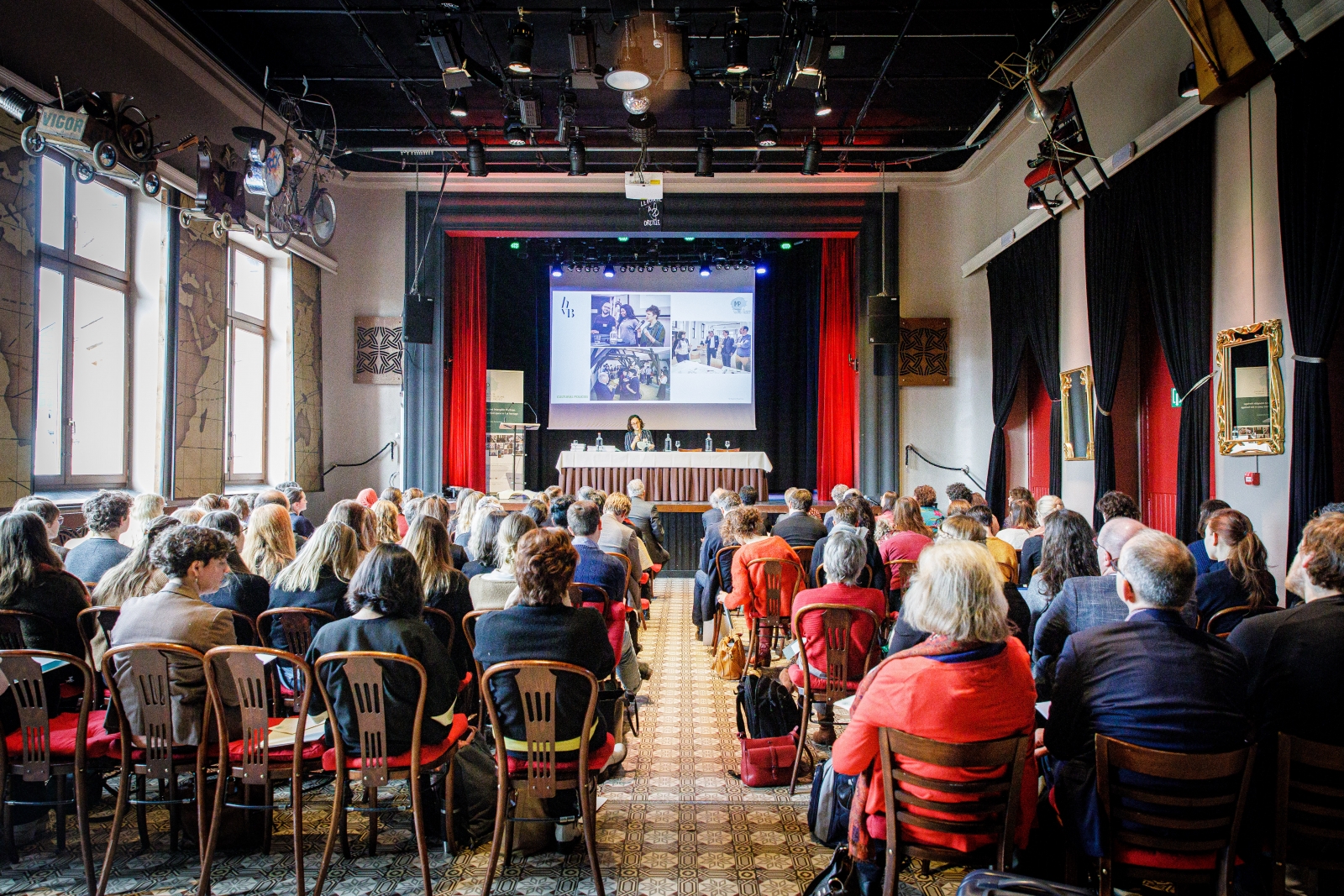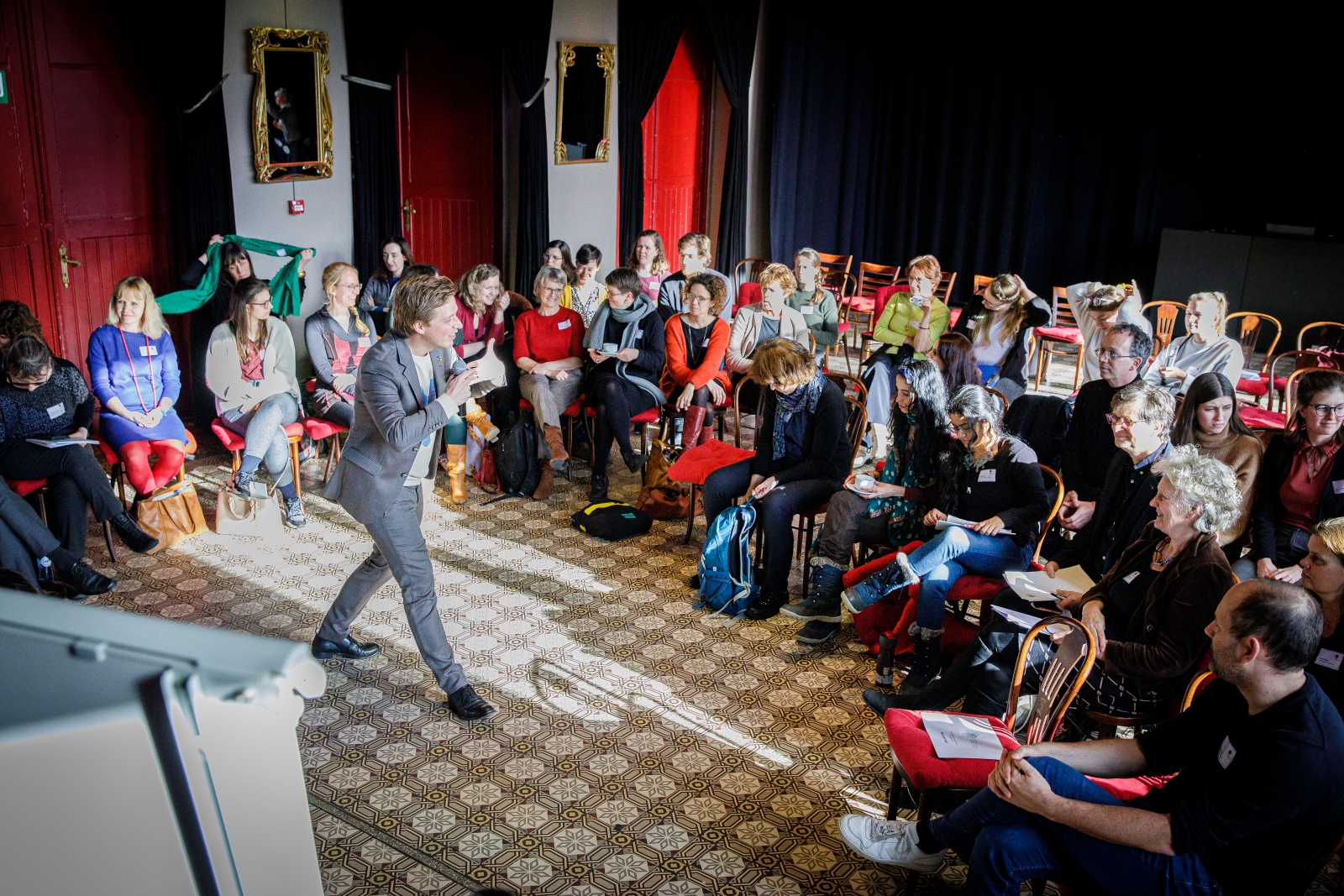Report of the IMP 2020 Concluding Symposium: Museums and intangible heritage: towards a third space in the heritage sector
Introduction
On 26 February 2020, the Intangible Cultural Heritage and Museums Project (IMP) held its Concluding Symposium in Le Bouche à Oreille in Brussels, Belgium. The meeting was the conclusion of three years of active collaboration on the crossroads of museums and intangible cultural heritage (ICH), carried by partners in Belgium, the Netherlands, France, Italy and Switzerland, in collaboration with NEMO – Network of European Museum Organisations, ICOM International and ICH NGO Forum. The theme of the meeting was the exploration and development of a third space where innovative ideas and practices about the interaction of ICH and museums can flourish. It featured the official presentation of IMP’s outcome materials such as the book and its executive summaries, the toolkit and a declaration, prepared by all of the involved partners, on future dynamics on ICH and museums. At the same time, the Concluding Symposium served as a starting point for new encounters, and possible extension of the project into the future.
The day was moderated by Dr. Janet Blake (Shahid Beheshti University, Iran), who brought to the symposium programme a wide-ranging expertise in intangible cultural heritage, legal frameworks and international networks. In addition, the programme was also interspersed with video intermezzo’s, made by Pien van Grinsven. A total of 10 video's presented a rich sample of the many case studies on ICH and museums that were gathered over the course of IMP, coming from both the perspective of heritage practitioners working with museums, and from the perspective of museums setting up projects and displays on ICH.
WATCH ALL THE VIDEO TESTIMONIALS
Opening of the Symposium
The day was officially opened by Dr. Janet Blake and Dr. Marc Vervenne, the president of the Flemish Commission for UNESCO in Belgium, who contributed to the realization of the IMP Book.
As a general overview of the Intangible Cultural Heritage and Museums Project, Kia Tsakiridis (Workshop Intangible Heritage Flanders, coordinator) subsequently sketched the progress of the project throughout the years, reflecting on its main accomplishments. Over the years, the focus of the project has opened up towards the larger quest on how to shape dynamic interactions between all actors involved from the fields of ICH and that of museums, mutually reinforcing each other for the sake of heritage care – encased in a larger framework: a path towards more social relevance, social cohesion, sustainable development and cultural diversity.
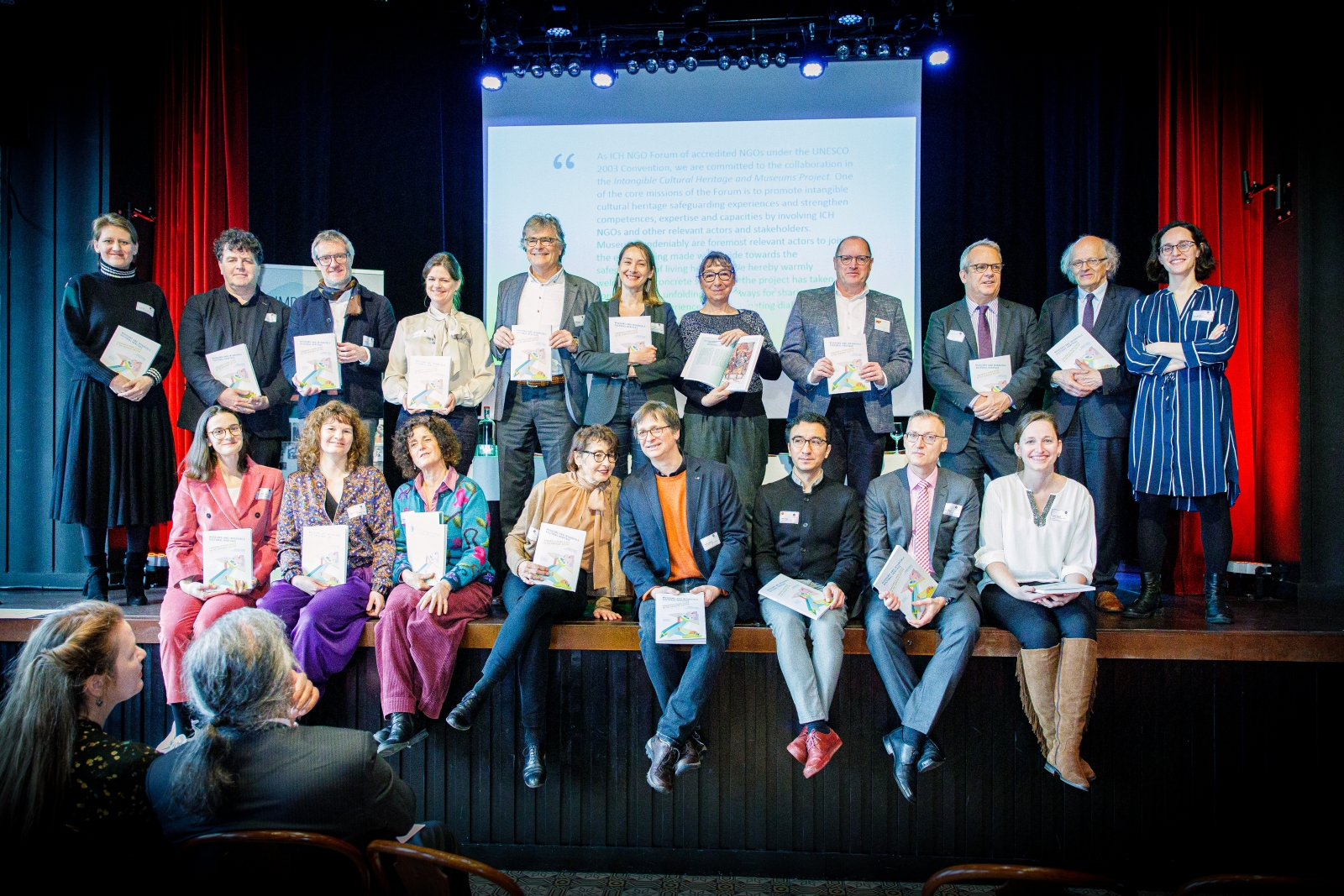
Two of the main outcomes of IMP are the development of the tookit and book – the latter accompanied by an executive summary in the project’s five languages (English, Dutch, French, Italian, German). In the afternoon of the Symposium, each of these was explored in detail in two parallel sessions. In the morning plenary session, Tamara Nikolić Đerić – the main editor of the publication – and Jasper Visser – who accommodated the development of the toolkit – provided a brief overview of each.
Toolkit Book Executive Summary - EN Executive Summary - DE
Executive Summary - NL Executive Summary - FR Executive Summary - IT
Keynote presentation
At the end of the morning, Dr. Amareswar Galla (International Centre for Inclusive Cultural Leadership, Anant National University & International Institute for the Inclusive Museum) provided the keynote presentation, entitled “Discursive crossings in liminal spaces.” Drawing upon decennia of experience in intercultural exchange and international networking in the cultural heritage field, he provided a colorful and comprehensive view on the subject of intangible cultural heritage and museums. He delved in some of the issues and debates that arise when looking at ICH from different cultural perspectives, such as the fact that some cultural practices and traditions (e.g. the Indian caste system) are commonly regarded as intangible cultural heritage, even though they are not aligned with universal human rights. His cross-cultural outlook also revealed that many cultures do not have a word that is equivalent to the western notion of heritage, but that instead, in many languages what we understand as heritage is captured in concepts referring to “the things we breathe” – clearly outlining the centrality of the range of ICH practices in human existence.
The International Institute for the Inclusive Museum aims to support museums in how to work with ICH communities, groups and individuals in ways that go beyond dichotomies such as us and them. This means that power balances need to be carefully monitored, in order to avoid situations in which museums are solely determining how ICH should be treated and represented in museum settings. This includes an awareness of the fact that defining is containing, i.e. that defining a community or heritage practice already implies an act of taking control. In order to move forward with ICH and museums in ways that are mutually respectful, among many other things, we need to gain a better understanding of historical processes such as colonialization, and the impact it still has on cultures and communities today. Reflective trajectories such as these are necessary for successfully decolonizing existing museum collections and activities. In general, museums need to give close consideration to their pedagogy, i.e. their methodologies for representing their collections to the outside world. Intangible heritage should not be merely something that is added to the range of a museum, but needs to be integrated in ways that honor the UNESCO 2003 Convention for the Safeguarding of the Intangible Cultural Heritage, but also other conventions, charters and key texts of organizations such as UNESCO and ICOM International.
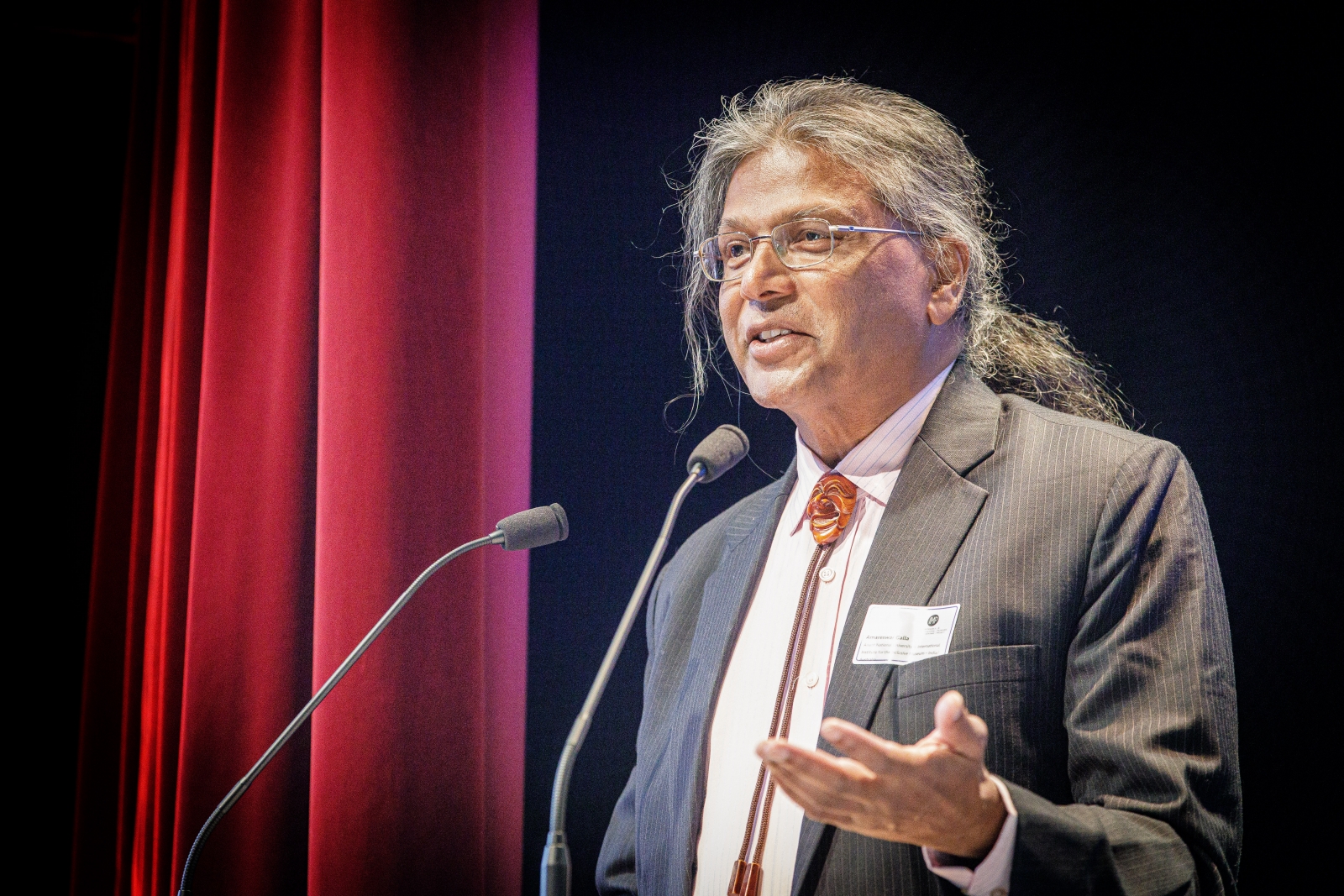
Roundtable discussion
In the afternoon, representatives from international stakeholder organizations from the field of ICH on the one hand, and from that of museums on the other hand were invited on stage, alongside Workshop Intangible Heritage Flanders – IMP’s lead partner – and the Intangible Cultural Heritage section of UNESCO. Janet Blake moderated a roundtable panel consisting of Tim Curtis (UNESCO), Peter Keller (ICOM International), Meg Nomgard (ICH NGO Forum), David Vuillaume (NEMO – Network of European Museum Organisations), and Jorijn Neyrinck (Workshop Intangible Heritage Flanders). Among other topics, the conversation addressed the question whether intangible cultural heritage can radically change the way we see museums in general, or perhaps, whether we need separate ICH museums entirely. The panel agreed that ICH provides a unique opportunity for museums to reconsider themselves, which is neatly aligned with ongoing debates such as the ongoing ICOM discussion on the definition of museums. Meg Nomgard (ICH NGO Forum) underlined the importance of civil society organisations in museum work. This opens up many opportunities for bridging tangible and intangible heritage, and ICH and museums. As such, museums can become meeting places where ICH is explored, discussed and safeguarded, embedded within communities and societies. This was echoed by Tim Curtis (UNESCO), who emphasized that the interaction of ICH and museums – or projects in which this interaction takes place – can significantly alter our concept of what a museum actually is. From a cross-cultural point of view, we often see that a museum is commonly associated with processes such as knowledge sharing, and that making museums is in itself a practice of intangible cultural heritage, through the many narratives they are embedded in. Jorijn Neyrinck (Workshop Intangible Heritage Flanders) pointed out that, throughout this interaction, dialogue, equality and balance are the crucial values to keep in mind.
As was also addressed during the keynote speech, the Intangible Cultural Heritage and Museums Project contributed to many debates on ICH and museums, but also raised many more new questions. The roundtable panel explored how, after the project formally comes to an end, the third space of ICH and museums should continue to take shape in the future. David Vuillaume (NEMO) addressed the potential for trans-European or international organizations to influence large-scale developments. As opposed to actively directing museums and museum organizations, NEMO aims to show opportunities and guide museum professionals into the future. For the subject of ICH and museums in particular, the IMP book, summaries, declaration and toolkit will be valuable resources to achieve this. Peter Keller (ICOM International) noted the importance of critically assessing outstanding reference texts, such as the ICOM Code of Ethics for Museums. The Code in its current form was voted in 2007, but might benefit from reviewing it in the light of more recent developments, such as the UNESCO 2015 Recommendation concerning the Protection and Promotion of Museums and Collections. On a global scale, socioeconomic paradigms such as the Sustainable Development Goals framework can also be helpful with a view to implementing new ideas on ICH and museums on different policy levels.
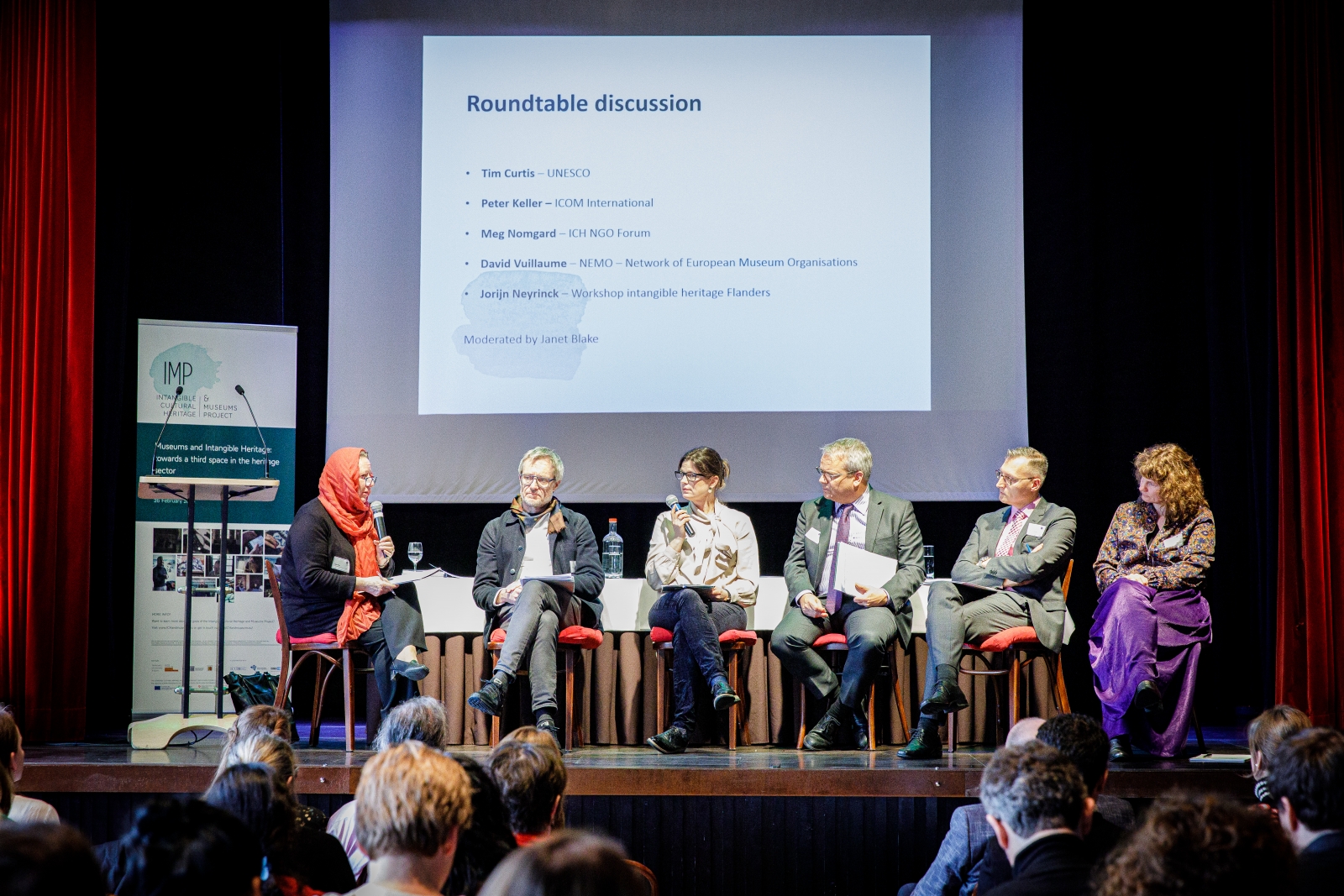
Parallel sessions
In the afternoon, there were parallel sessions on the IMP book and toolkit.
- 'Museums and intangible cultural heritage. Towards a third space in the heritage sector. A companion to discover transformative heritage practices for the 21st century' forms a collective of different voices, projects and perspectives on intangible heritage and museums. The book was presented in depth by its main editor, Tamara Nikolić Đerić. The first part of the book outlines several key concepts that are crucial to clarify, such as participation, sustainability, diversity, and ‘communities, groups and individuals’ (CGIs). The second half of the book mainly centers around the intersection methodology, in which the concepts of preservation – more characteristic of traditional museum practices and its related so-called ‘functions’ (such as acquiring, conserving, … ) – and safeguarding – with measures such as transmission and identification, characteristic of ICH – are woven together. Combining these methodological approaches, gives rise to the creation of a third space. Where the mechanisms related to museums and their functions are connected to those of ICH and safeguarding measures, new possibilities for heritage to be transmitted to the future arise.
- Jasper Visser presented the the IMP toolkit, that includes inspirational and pragmatic methodological tools for museums, in order to engage with the ICH-paradigm and support (members of) ICH-communities, -groups and individual ICH-practitioners in safeguarding their intangible cultural heritage. Next to providing newly developed tools, existing materials relating to the combined topic of ICH and museums are also incorporated in the overview. The toolkit is open to additions in the future. Input for the toolkit items were compiled throughout the course of the project and are divided into three categories:
Declaration on the dynamic engagement between a multiplicity of actors from the fields of museums and intangible cultural heritage
After the parallel session, the Symposium participants gathered in the plenary room for the final part of the program. In the final stretch of the Intangible Cultural Heritage and Museums Project, the project partners worked together on the development of a Declaration, which will help to take the findings and outcomes of the last three years into the future. The Declaration focuses on the strengths and capacities of all parties involved in safeguarding intangible heritage, and the possibilities this offers in relation to a.o. developing social cohesion, economy, and sustainability through collaborative efforts.
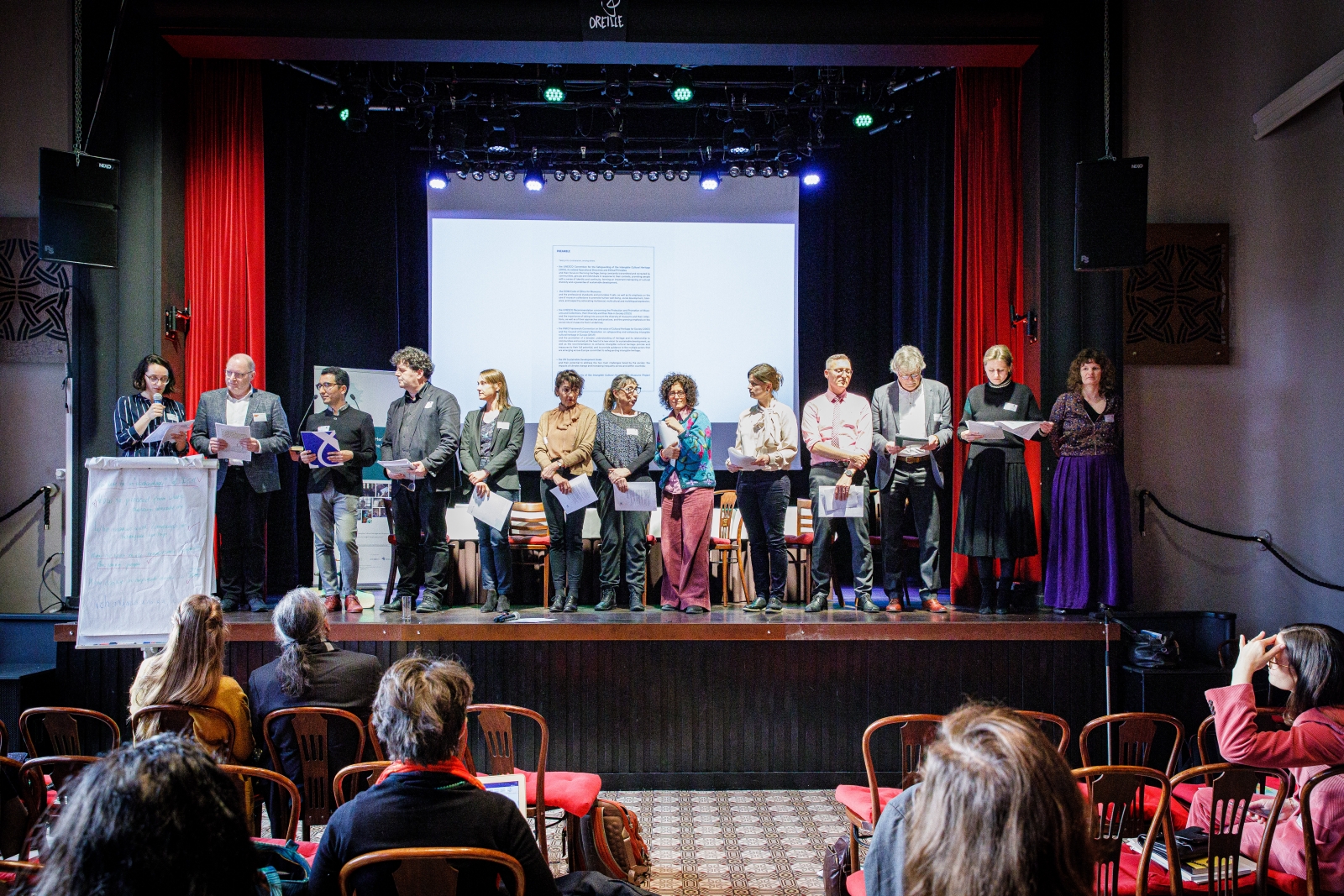
Conclusion
Dr. Marc Jacobs (University of Antwerp) wrapped up the Symposium with a short reflection on the day, and on the philosophical and scholarly field around ICH and museums. In a recent article, Serge Chaumier launched the provocative question: ‘Why should museology no longer be a part of heritage’? (Chaumier, S. Pourquoi la muséologie ne devra plus être une composante du patrimoine. In: Mairesse, F. Nouvelles tendances de la muséologie. Paris: La Documentation Française, 2016, p. 67-80.) Chaumier associated heritage with the overwhelming weight of the past, of collections, of huge piles of objects, of conservation and even conservatism, with what Laurajane Smith has called an Authorized Heritage Discourse. Chaumier wanted to advocate or even rescue the emphasis on involving visitors and other stakeholders, source and other heritage communities. According to Jacobs, the IMP-project has demonstrated repeatedly why museums and (other) actors advocating and realizing safeguarding intangible cultural heritage should continue to team up and keep on cross-fertilizing each other. The toolkit and the new Companion to Discover Transformative Heritage Practices for the 21st Century resulting from the project are very welcome, according to him. If they will open a third space, will remain to be seen and realized stated Jacobs. But, according to Jacobs, in any case the series of colloquia and workshops and the many tools and results of the IMP project, and the wonderful international collaboration facilitated by Workshop Intangible Heritage Flanders, are levers to tackle this challenge. No time for wrapping up, he concluded, time for further unpacking and sustainable development.
Watch the entire Symposium again on our YouTube channel, or browse the photo album on our Facebook page!
